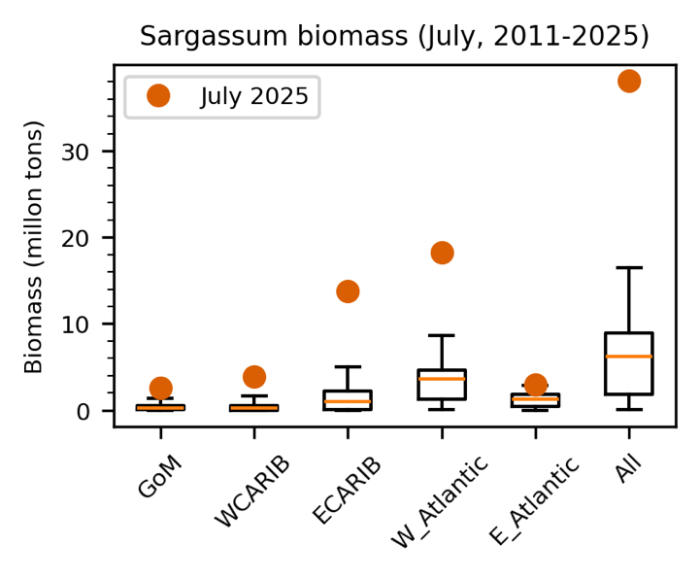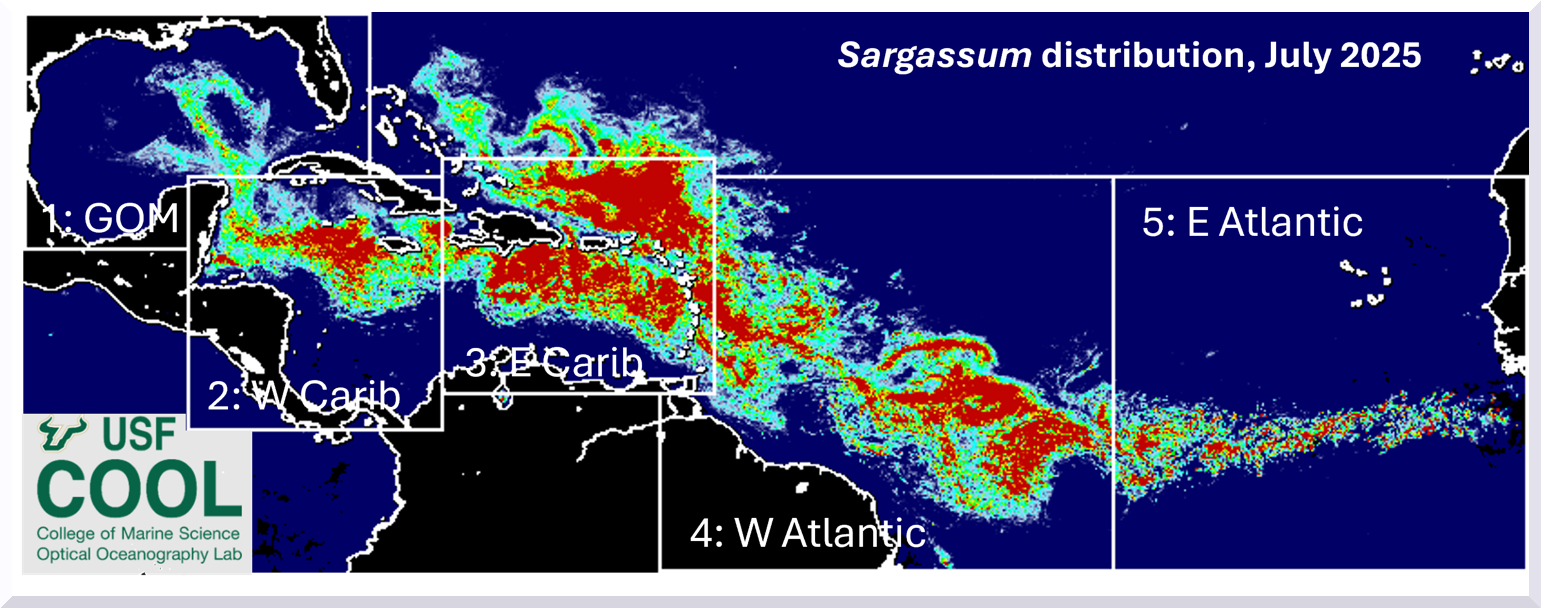The map above shows average Sargassum abundance for the month of July 2025, with warm colors representing higher abundance. The top color (red) indicates that 0.4% of the ocean surface is covered by Sargassum, meaning that Sargassum clumps and mats are scattered here and there in the location. The Sargassum abundance for each region is compared with historical values in the same month of 2011 – 2024 in the whisker box plot below, where horizontal bars in each vertical box indicate minimum, 25%, 50%, 75%, and maximal historical values between 2011 and 2024, respectively.

Unlike most previous years, total Sargassum amount in the entire Atlantic Ocean (including the Caribbean Sea and Gulf of America) increased slightly to 38 million metric tons in July. This is attributed to the substantial increases in 3 of the 5 regions, namely the Gulf of America, western Caribbean, and eastern Caribbean, mostly due to physical transport of Sargassum. In contrast, total Sargassum amount decreased slightly in the tropical Atlantic (including both West Atlantic and East Atlantic). This suggests that Sargassum growth in the tropical Atlantic continued to lose momentum, with loss outweighing growth. Nevertheless, total Sargassum amount in all but the East Atlantic more than doubled their historical highs in July. On the other hand, the spatial distribution patterns in July 2025 remained stable from June 2025. Significant Sargassum inundation events have continuously been reported around most Caribbean nations and islands, including the Mexican Caribbean coast. Small amount of Sargassum continued to reach the Straits of Florida, with mild beaching events reported along the SE coast of Florida.
Looking ahead: Historically, Sargassum amount mostly decreased from July to August. However, with the continuous transport from the tropical Atlantic to the Caribbean Sea and to the Gulf of America, Sargassum amount in these two regions may remain stable or decrease only slightly, meaning continuous beaching events around the Caribbean and Florida. However, whether a beach or small region receives large amount of Sargassum depends on local factors that are difficult to predict, including winds and ocean currents.
All previous monthly bulletins as well as daily imagery can be found under the Sargassum Watch System (SaWS).



